

Metal detecting holidays in England with the World's most successful metal detecting club.
Twinned with Midwest Historical Research Society USA


Metal detecting holidays in England with the World's most successful metal detecting club.
Twinned with Midwest Historical Research Society USA
Sept 2008 Finds page 2 |
|||||||||
50Bc Gallo Belgic Celtic gold stater - 17.42mm, 6.19g - CCI 08.9320 |
|||||||||
15thC half Ryal coin weight - 15.90mm, 4.01g-61.9gn |
Early Medieval decorated buckle with integral box chape |
||||||||
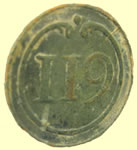 |
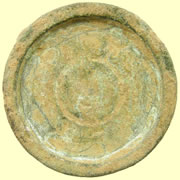 |
 |
|||||||
French Infantry Button 119th Line Regiment Circa 1803-1814 |
1704 Queen Anne trade weight - London mintmark Crown A |
Georgian glass and copper alloy ring |
|||||||
East Anglian Type - IC stands for Jesus Christ - 54.25g, 49.34mm H x 31.73mm W x 13.94mm T Pilgrim ampullae - holly water bottle made of lead 12th to 15thC, These ampoule were brought from pilgrimage places as a souvenir Mitchiner suggests that many ampullae were used in the annual springtime ’Blessing the Fields’ ceremony, in which the Holy Water they contained was sprinkled on the ground to give prayer for a good harvest. Having served this purpose, Mitchiner suggests that the ampullae were discarded. Others have suggested that the ampullae were buried along with their contents for a similar purpose. |
|||||||||
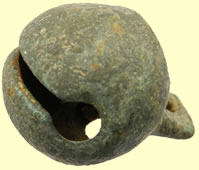 |
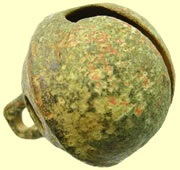 |
||||||||
Loads of 18thC crotal bells being dug |
|||||||||
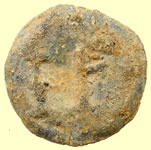 |
 |
  |
|||||||
17th lead tarde token |
17thC belt slide |
1930 George V milled silver sixpence (28) |
|||||||
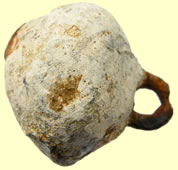 |
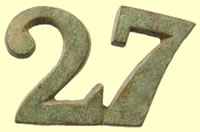 |
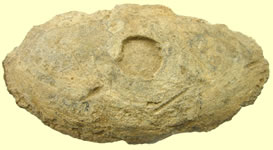 |
|||||||
Post medieval lead hanging weight |
27th regiment of foot lapel badge | 18thC lead palm guard |
|||||||
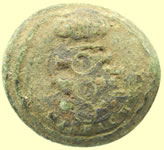 |
 |
 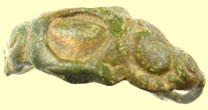 |
|||||||
|
1550 -1650 Buckle |
16thC copper alloy finger ring |
|||||||
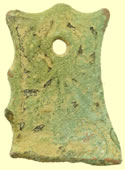 |
 |
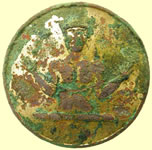 |
 |
||||||
17thC clasp fragment |
Musket ball with casting sprue |
18thC livery button |
Victorian Toy key |
||||||
 |
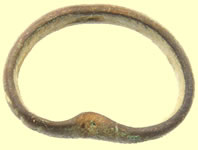 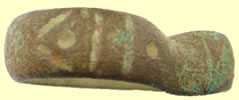 |
||||||||
Huge pewter medallion - no idea what symbol means |
17thC decorated finger ring - fish symbol ? |
||||||||
 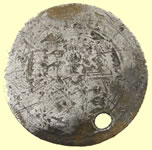 |
 |
||||||||
1817 George III milled silver sixpence (29) |
Complete Georgian watch winder |
||||||||
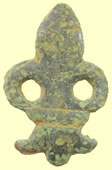  |
 |
||||||||
17th mount with 2 integral lugs |
Victorian Black enamel and glass stone ring |
||||||||
 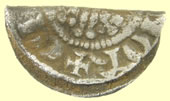 |
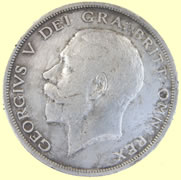 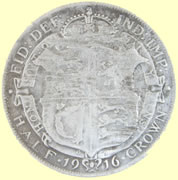 |
||||||||
13th C hammered silver short cross penny - will need to get the goldsmith to straighten it to ID the King |
1916 George V milled silver halfcrown (30 pence) |
||||||||
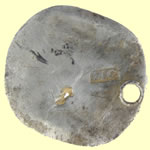 |
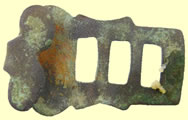 |
 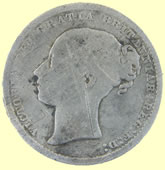 |
|||||||
Flattened 1696 William III milled silver 6 pence love token over stamped MC (31) |
18thC clog fastener |
1872 Victorian milled silver shilling (12 pence) |
|||||||
 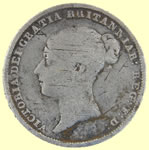 |
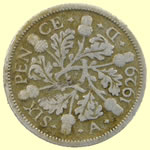  |
||||||||
1851 Victorian milled silver sixpence (33) |
1929 George V milled silver sixpence (34) |
||||||||
 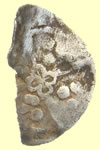 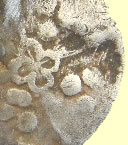 |
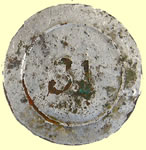 |
 |
|||||||
Very unusual medieval King Edward hammered silver penny - I know of no quatrefoil on reverse with a cross at centre - It also has a 4 pellet in one qtr - needs more research |
18thC Rev War period 31st Regiment of foot Officer's button |
Royal Reg't of Artillery Officer & O/R's - 1831-1840 |
|||||||
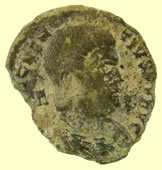 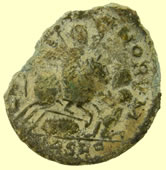 |
|||||||||
I know this one on sight - and it's actually fairly scarce. This is the short-lived emperor Magnentius. You can easily recognize him and his brother by their distinctive and somewhat silly-looking mullet hair-do's. An interesting footnote to the period of Constantius II's reign, Magnentius had been a general of Constans'. Around the time Constans died in 350 AD, Magnentius had recently been proclaimed emperor by his legions and his authority was widely accepted in Gaul and other Western Provinces, particularly in the power-vacuum caused by Constans' demise. He named his younger brother Decentius Caesar in the spring of the next year - 351. Their rule was meteoric and brief, with both of them commiting suicide after a string of lost battles in 353.
If, as you say, it's "like a typical 3rd c size" (and I'll assume you really meant 4th century here) this would be a somewhat lightweight Centenionalis, or possibly a half - RIC says "20-21mm & 5.07gm for average size & weight and doesn't list a normal half-piece, but it's not unusual for them to be found a bit on the smallish side. This reverse, GLORIA ROMANORVM, with the ruler spearing an unfortunate "barbarian" enemy from horseback, was struck only for Magnentius and not for his younger brother - and only for a short time.
This piece is from the mint at Lugdunum - modern-day Lyon in France - and dates to the period before the elevation of Decentius, so it's pretty solidly dateable to January 350 - Spring 351.
RIC Lugdunum 115, LRBC 214, SR 4021.
Mark |
|||||||||
Saxon C600 - 775 AD Silver Sceat sent to Fitzwilliam museum for recording and ID 12.08mm,1.25g 'Many thanks for this interesting new find, which I have recorded as EMC 2008.0410. This seems to be a new variety of the Vernus type, with an inscription reading VE[N?]VEO. It does not really belong to any of the varieties of the Vernus type described in Michael Metcalf's Thrymsas and Sceattas. Regards' Martin
|
|||||||||
 |
 |
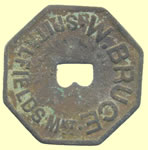 |
|||||||
Roman stone shot |
CSA badge ? |
20thC W.Bruce Spitlefields market London trade token |
|||||||
 |
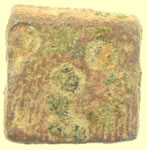 |
 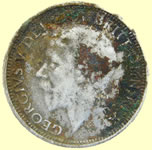 |
|||||||
17thC decorated belt slide |
1770's bullion weight with Lion mark - 2 pennyweight 'Annulet' pennyweight type |
1936 George V milled silver shilling (35) |
|||||||
 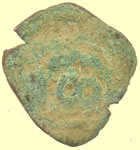 |
|
||||||||
1652, 8 Maravedis revalidated with VIII counterstamp on 8 Maravedis of 1625 of uncertain mint, Felipe IV (1621-1665) of Spain
|
20thC Silver ring - 'Silver made in England |
||||||||
 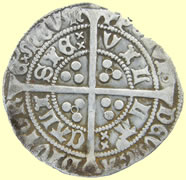 |
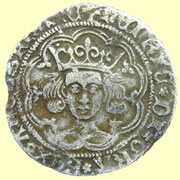  |
||||||||
1422-27 Henry VI Annulet issue hammered silver groat (4 pence) Initial mark pierced cross obv HENRIC DI GRA REX ANGLIE Z FRANCE Outer legend POSVI DEVM ADIVTORE MEVM Inner legend - VILLA CALISIE - Calais Mint 3.63g,26.14mm |
1427-30 Henry VI Rosette -Mascle issue hammered silver groat (4 pence) Initial mark incurved pierced cross obv HENRIC DI GRA REX ANGLIE Z FRANCE Outer legend POSVI DEVM ADIVTORE MEVM Inner legend - VILLA CALISIE - Calais Mint 3.25g,25.81mm |
||||||||
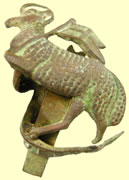 |
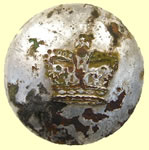 |
  |
|||||||
The Queens regiment cap badge |
Button with Crown |
Roman drop pendant |
|||||||
 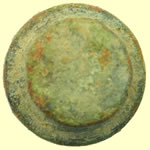 |
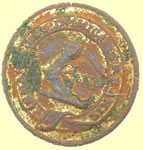 |
 |
|||||||
Interesting trade weight - no hallmarks |
19thC livery button |
Georgian bell clapper |
|||||||
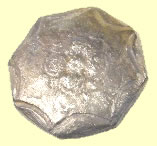 |
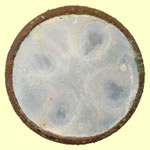 |
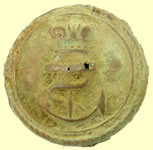 |
 |
||||||
18thC silver button |
Neat Georgian button with peal inlay |
Unusual crown on this Navy button - not checked ref books yet |
17thC copper alloy deorated ring |
||||||
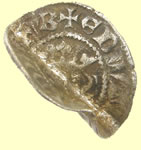 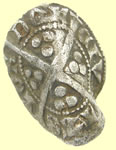 |
 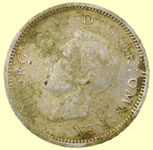 |
||||||||
1279 Edward 1st hammered silver florin penny -class 10cf3 Obv EDWAR ANGL DNS HYB Rev CIVI/TAS/LON/DON - London mint 1.35g, 18.25mm |
1937 george V milled silver sixpence (36) |
||||||||
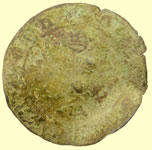 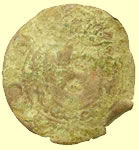 |
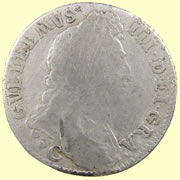  |
||||||||
Interesting 16thC Jetton - not checked ref books yet |
1697 William III milled silver shilling - Coventry mint (37) |
||||||||
Gallo Belic 50 BC Celtic gold full stater 6.30g, 17.59mm - CCI 08.9323 |
|||||||||
  |
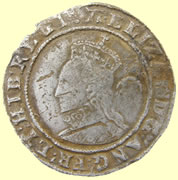 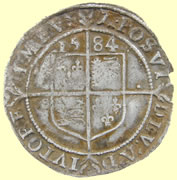 |
||||||||
1573 Elizabeth 1st hammered silver 3 pence - acorn mintmark 5th issue |
Crisp 1584 Elizabeth 1st hammered silver sixpence - A mint mark 6th issue |
||||||||
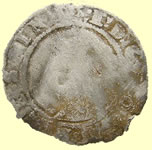 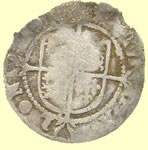 |
  |
||||||||
1582 - 84 Elizabeth 1st hammered silver half groat (2 pence)- A mint mark 6th issue |
1574 Elizabeth 1st hammered silver half groat (2 pence)- Acorn mint mark 4th issue |
||||||||
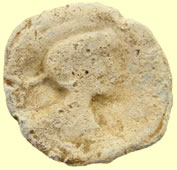 |
 |
 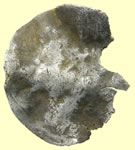 |
|||||||
Roman lead token |
1826 William IIII trade weight - London Crown W 6.87g |
c13th C Medieval lead hammered silver penny |
|||||||
 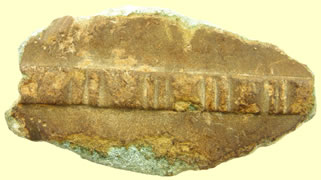 |
|||||||||
Roman bronze decorated Amphora strap end 44.38mm L x 23.89 W 17.23g |
|||||||||
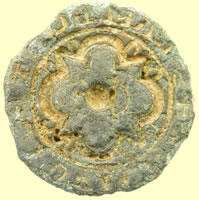  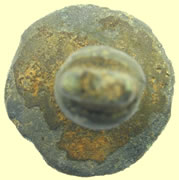 |
|||||||||
Medieval seal matrix 20.22m dia , 9.34g |
|||||||||
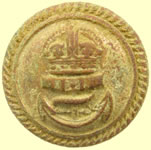 |
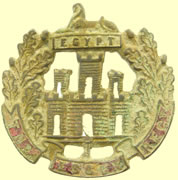 |
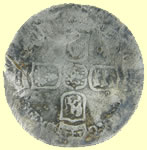  |
|||||||
RN Capt / Commander - 1901 |
The Essex Regiment cap badge |
1696 William III milled silver sixpence (38) |
|||||||
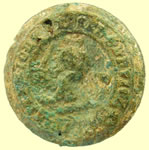 |
 |
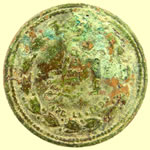 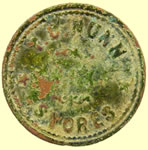 |
|||||||
Trinty House pilot button 'Trinity Light Vessel Service' Mid 19th C Firmin & Sons |
? |
T.C Nunn stores £1 token |
|||||||
|
 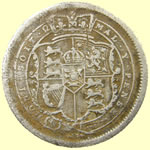 |
||||||||
Scotland Alexander 1246-1286 hammered silver penny Class 4 obv - ALEXANDER DEI GRA Rev -REX SCOTORUM - King of Scotland |
1817 George III milled silver shilling (39) |
||||||||
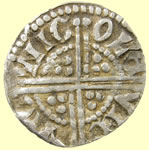 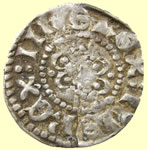 |
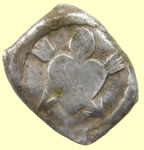 |
||||||||
1247 Henry III hammered silver penny - Class 3 a Facinationg coin - Moneyer is Nichole but the mint is not in C.Wren's book. Mint clearly starts VCE which his no known mint ? |
17thC Charles II silver button - reported as treasure |
||||||||
Early hand made pure gold ring - no hall marks 1.18g, 23.26mm x 1.06mm T Reported to Colchester museum as potential treasure |
|||||||||
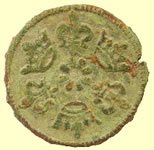  |
  |
||||||||
Smallest Jetton I have ever seen, it is like a 1586 Hans Krauwincel II Rose orb Jetton - need to check it in the ref books 0.54g, 14.22mm |
Unusual 17thC mount with 2 integral lugs - note the decorated ends of the mount |
||||||||
 |
 |
||||||||
1550 -1650 spur buckle |
This would have been one amazing crotal bell if it was complete - never seen a cherub face on a bell - Circa 16th C |
||||||||
850 BC Bronze Age socketed axe 37.04 W x 30.58mm L47.54g |
|||||||||
Medieval bronze seal ring - bearded figure sitting - 2.70g, 18.86 mm dia x 9.62 mm W |
Roman plain loop buckle |
||||||||
Superb find - 1st C Celtic wode grinder - 'bull head' type with broken suspension loop |
|||||||||
  |
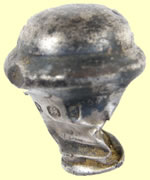 |
 |
|||||||
Another unpublished coin in Wren or North - Clearly an Archbishop or Archiepiscopal issue with quatrefoils on reverse and 5 sided star and key by bust. No coin has the combination of star and key. Should be T or B and key. Edward IV 1461 AD - I will send it off to the British Musuem expert for his views |
Silver cane top - London hallmark 1850 |
18thC clog fastener |
|||||||
 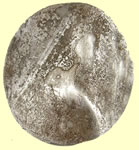 |
 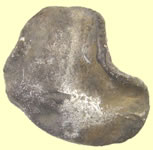 |
||||||||
1690's William III milled silver sixpence (40) |
Roman silver coin contempory forgery - copper core |
||||||||
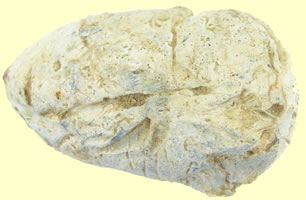 |
 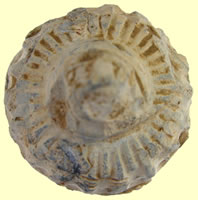 |
||||||||
Roman lead catapault shot |
Huge deocrated lead hanging weight |
||||||||
  |
Circa 1260 AD lead personal seal , 4 have been found attached to pasture rights. The design is typical of mid 13thC non heraldic seals |
||||||||
Roman strap end fragment |
|||||||||
 |
 |
 |
 |
||||||
19thC customs button |
Trinty House pilot button 'Trinity Light Vessel Service' Mid 19th C Firmin & Sons |
Neat Georgian button |
'AUSETIGIO REGIS ETSEM US ANGLIA' BUTTON ? |
||||||
 |
 |
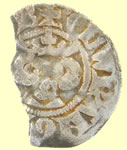  |
|||||||
WWII NDF button ? |
RN Capt / Commander - 1812 |
1341 Edward III florin type hammered silver penny - Initial mark Cross 2 obv EDWR ANG* *** HYB Rev CIVI/TAS/CAN/TOR - Canterbury mint |
|||||||
 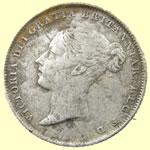 |
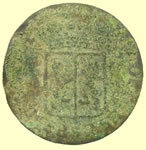 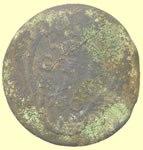 |
||||||||
1840 Victorian milled silver 6 pence (41) |
1850 Ducth 1/16th of a skilling copper coin |
||||||||
 |
 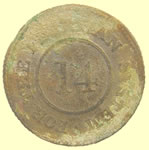 |
||||||||
19thC advertising watch winder |
20th C Gaming token |
||||||||
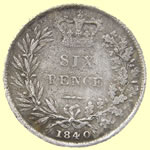 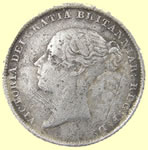 |
  |
||||||||
1840 Victorian milled silver 6 pence (42) |
This is an interesting piece as it is domed lead like a Medieval Pilgrims item and would have been a pendant by the hanger hole. One for the museum to look at |
||||||||
Gallo Belgic 50BC Celtic gold stater 6.38g, 16.96mm |
|||||||||
1507-9 Henry VII Regular profile issue hammered silver groat - Triple banded crown - Pheon initial mark 2.90g, 27.51mm Obv HENRIC VII DI GRA REX ANGL Z FRA Rev POSUI DEUM ADIUTO(R)E MEU(M) |
|||||||||
 |
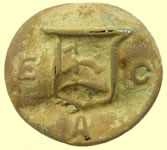 |
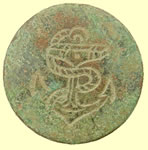 |
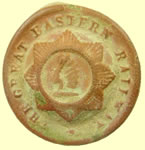 |
||||||
19thC Eastern Railways and steam ship Co |
Essex counties button |
Early foreign navy ? not checked ref books yet |
19thC The Great Eastern Railways button |
||||||
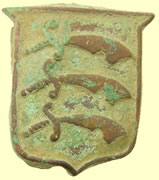 |
 |
 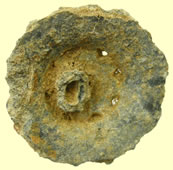 |
|||||||
Essex badge |
Hunting button |
Georgian pewter button with glass stones |
|||||||
 |
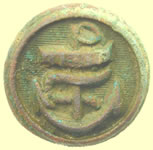 |
||||||||
East London Engineers button
|
Generic merchant navy button |
||||||||
 |
 |
  |
|||||||
Georgian bell type trade weight |
27th Regiment of foot button |
Not found this type before, 5 pennyweight and 8 grain bullion weight 1770's pattern |
|||||||
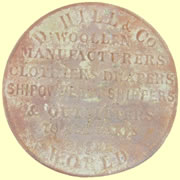  |
 |
||||||||
1825 D.Hill & Co Wollen maufacturers, clothiers, drapers, shipowners,shippers, outfitters to all parts of the world Hartlepool |
'Retrorsum Novesvig Nulla' vestigia ... nulla retrorsum: No signs of any returning, usually translated, no stepping back |
||||||||
 |
 |
 |
 |
||||||
42nd Regiment of foot
|
1795 pattern Royal artillery button |
Georgian button |
Georgian fob seal with mans head facing right |
||||||
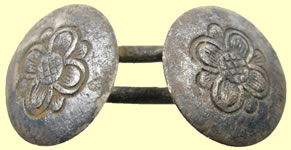 |
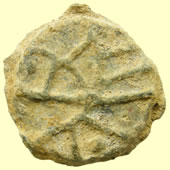 |
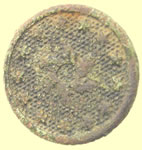 |
|||||||
17thC silver cufflinks reported as potential treasure |
C10thC Saxon lead token |
Star button - USA ? |
|||||||
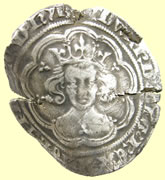 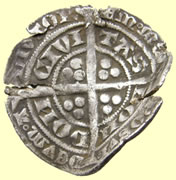 |
 |
 |
|||||||
1351-2 Edward III hammered silver groat - Cross 1 Pre treaty series C Obv EDWARD D G REX ANGL Z FRANC D HYB 26.99mm, 4.38g |
Crown button ? |
19th C Stag hunting button |
|||||||
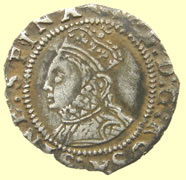 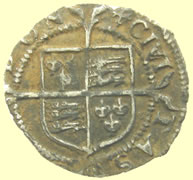 |
 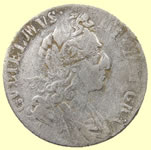 |
||||||||
1560-1 Elizabeth 1st hammered silver penny - Cross Crosslet 2nd issue |
1697 William III milled silver sixpence (43) |
||||||||
 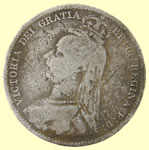 |
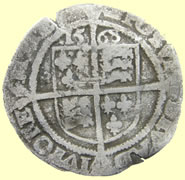  |
||||||||
1891 Victroain milled silver sixpence (44) |
1568 Elizabeth 1st hammered silver sixpence - Coronet mintmark 3rd issue |
||||||||
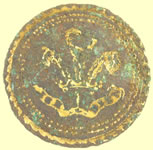 |
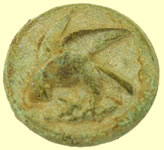 |
  |
|||||||
Real nice military button - not checked ref books yet |
19thC hawking button |
1634 Charles 1st hammered silver half groat |
|||||||
 |
 |
 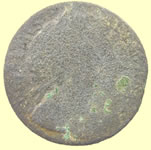 |
|||||||
17thC lead token - man standing |
Early Irish Army button ? |
1694 William and Mary copper half penny |
|||||||
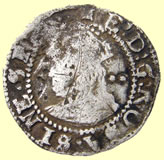 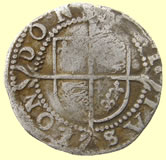 |
 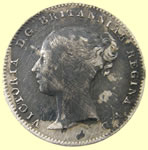 |
||||||||
1572-3 Elizabeth 1st hammered silver half groat |
1862 Victorian milled silver 3 pence (45) |
||||||||
|
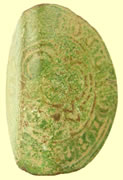  |
||||||||
Looks like a Roman Republican silver - BC in date - got it cooking to remove crust |
1586 Hans Krauwincel II Rose orb Jeton HANNS KRAVWINCKEL IN NVRENB |
||||||||
 |
 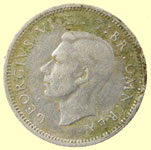 |
||||||||
Superb find medieval lead decorated spindle whorl |
1945 George V milled silver sixpence (46) |
||||||||
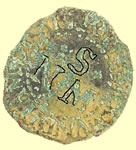 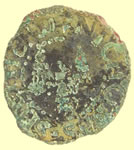 |
  |
||||||||
17thC Nicolas Straight of Tewkesbury Gloucestershire hammered copper trade farthing |
1623-4 James 1st hammered silver half groat - 3rd coinage Lis mintmark |
||||||||
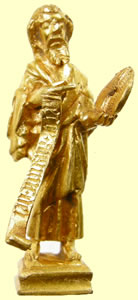 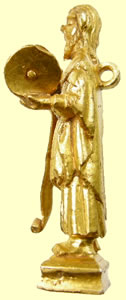 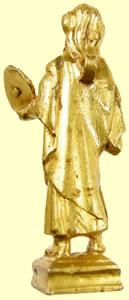 |
|||||||||
Stunning medieval gold statue pendant - C13th judging by the Lombardic script on the scroll . This is probably to do with the Catholic church (DEI) and one of the members suggested FRCO is St Francis Script reads FRCO ++SMYUNC +DEI - reported to Colchester museum as treasure 32.80mm H ,11.46g
|
|||||||||
1645 Charles 1st hammered silver shilling - Tower mint under parliament - Eye mintmark 32.09mm, 5.87g |
1274 Edward 1st hammered silver penny - Class 3d 16.72mm, 1.04g Obv EDWR ANGL DNS HYB Rev VILL/ABR/ISTO/LLIE - Bristol mint |
||||||||
|
 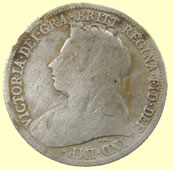 |
||||||||
Intertesting 17thC mount with 2 integral lugs |
1894 Victorian milled silver shilling 12 pence (47) |
||||||||
 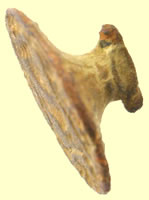 |
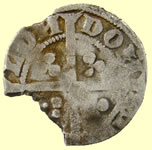 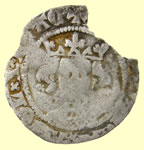 |
||||||||
16thC Tudor seal matrix - horse head facing right |
Interesting Medieval hammered silver penny with a legend ending in AC ? Still working on it Rev CIVI/TAS/LON/DON - London mint |
||||||||
 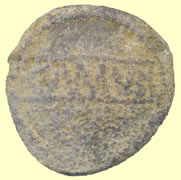 |
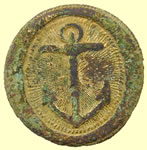 |
 |
|||||||
40 AD Cunobelin Celtic silver unit - in the 'cooker' to clean it up sent to CCI for recording and ID 14.25mm, 1.32g The two Cunobelin silvers are very nice, and a rare type at that. The first one (West side of the Bronze Age village) will be 08.9325, and logically enough today's will be 08.9326. They are both the same type, I think - the seated figure is to the left on the second one. The only standard reference for the type is no. 308 in Spink's Coins of England, it's not in Van Arsdell or the BM catalogue. On the first one of the two you can see the amphora which the seated figure is holding quite clearly, but the CVNOBE doesn't show up too well on either. I don't have the exact figures here for rarity, but I don't think there are more than a dozen of these recorded at most. Date is perhaps somewhere in the middle of Cunobelin's reign, say perhaps c. 20-25 AD. |
RN Capt / Commander - 1787 RN Lieutenant - 1787 |
Georgian watch winder |
|||||||
 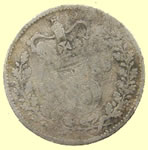 |
 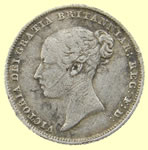 |
||||||||
1858 Victorian milled silver 3 pence (48) |
1855 Victorian milled silver 6 pence (49) |
||||||||
  |
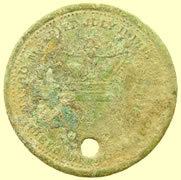 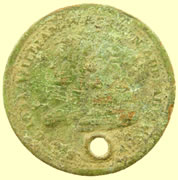 |
||||||||
1582-4 Elizabeth 1st hammered silver 3 pence - 'A' mintmark |
July 1818 Queen Adelaide/ Willam IIII marriage medallion |
||||||||
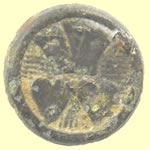 |
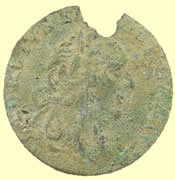 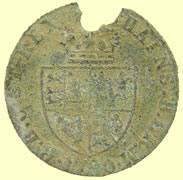 |
||||||||
Very interesting find, first base metal version of the silver 17thC Charles II marriage button |
18thC guinea gaming token |
||||||||
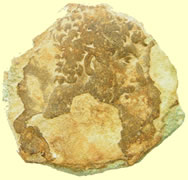  |
 |
||||||||
1st C Roman bronze sent for ID That is indeed a sestertius - or what's left of one - and was issued posthumously in honor of Lucius Verus - co-emperor with Marcus Aurelius from 161 AD to his death in 169. He wasn't much help while he was alive, being more interested in the "percs" and pleasures of Imperium than in service like his senior partner Marcus Aurelius, who spent nearly his whole reign out on the borders fighting "barbarian" invaders. He was "family", however - the son of Hadrian's chosen heir Aelius who predeceased him (Hadrian), and was married to Marcus Aurelius' daughter Lucilla - so was accorded all the conventional honors, etc.
The "wedding cake" looking arrangement on the reverse is a huge funeral pyre. The Romans cremated their dead, mostly, and the more important a person, the more public and lavish the event. Those who had no real "name" but were rich, might arrange for extravagant funerals as well, to try to gain some fame after death, at least.
There were two "stock" posthumous reverses for emperors at this time, the "layer-cake" crematory pile and an eagle standing on a globe. This coin was issued by Marcus Aurelius right after Verus' death in 169 AD. Similar coins were issued for both Antoninus Pius and Marcus Aurelius after their deaths - Verus' posthumous coins are a bit scarcer than either of the other two - Verus' lackluster life and career wasn't seen as deserving more than perfunctory, if Imperial, honors
Mark
|
Interesting widget from the field- anyone know what it is ? |
||||||||
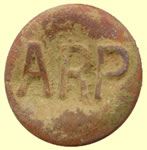 |
 |
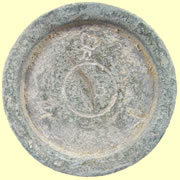  |
|||||||
WWII Air raid police button |
19thC livery button |
16th C Henry VIII trade weight - Crown h mark London Interesting marks on reverse to lighten the weight ? |
|||||||
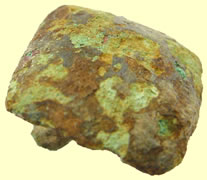  |
 |
 |
|||||||
Roman bronze armour mount |
1550 -1650 buckle |
1550 -1650 buckle |
|||||||
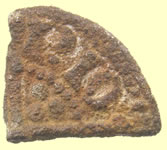  |
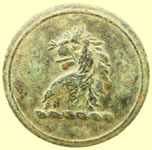 |
 |
|||||||
Medieval hammered silver cut 1/4 penny |
19thC livery button |
EARLY POST MEDIEVAL seal spoon handle Circa 1500 AD - Circa 1599 AD |
|||||||
 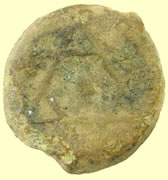 |
|||||||||
Georgian gilded button |
Medieval disc brooch - star of David |
||||||||
 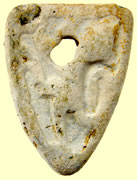 |
|||||||||
Stunning early medieval lead shield trade weight - Lion pracing right - first of that type we have found |
|||||||||
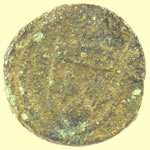 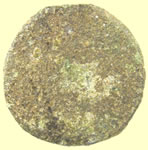 |
|
||||||||
1422-61 AD Bronze coin weight - French Ecu - Three lis in shield type |
10 to 40 AD Cunobelin Celtic silver unit - figure sitting, facing left - in the 'cooker' starting to clean it up, sent to CCI for recording and ID 14.59mm, 1.14g The two Cunobelin silvers are very nice, and a rare type at that. The first one (West side of the Bronze Age village) will be 08.9325, and logically enough today's will be 08.9326. They are both the same type, I think - the seated figure is to the left on the second one. The only standard reference for the type is no. 308 in Spink's Coins of England, it's not in Van Arsdell or the BM catalogue. On the first one of the two you can see the amphora which the seated figure is holding quite clearly, but the CVNOBE doesn't show up too well on either. I don't have the exact figures here for rarity, but I don't think there are more than a dozen of these recorded at most. Date is perhaps somewhere in the middle of Cunobelin's reign, say perhaps c. 20-25 AD. |
||||||||
 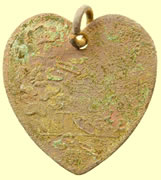 |
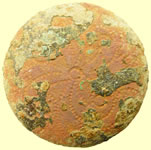 |
 |
|||||||
17thC button |
Medieval mount with 2 rivet fixings | ||||||||
Remarkable Roman bronze 6.99g, 28.90mm sent for ID Interesting one . There were 2 emperors who used the name "Maximianus" - one was Diocletian's colleague Maximianus "Hercules" who had a colorful career, being emperor no less than 3 times in his life and Constantine the Great's father-in-law, among other factoids. There was also his junior colleague Galerius Valerius Maximianus, generally known as "Galerius". Galerius was Caesar under Maximian, then he was Maximian Augustus in his own right during the first of the senior Maximian's abdications. He was also one of the VERY few emperors of this era who died in his own bed (albeit from a dreadful disease).
So the issue is, when faced with a coin with the obverse legend: "...MAXIMIANVS PF AVG", which Maximian do we have here, the 1st or "2nd"? - it's one case where if he'd been called "Maximian II" it would be more useful than his given name of Galerius. So, depends on when the coin was issued - and this we must discern from the sequence marks. So, we have to approach this coin from the reverse to try tell when it's from in order to know who it is. And, Voila! this coin has neither exergual mintmark or fieldmarks to help us, plus it's the extremely common reverse type of Genio Populi Romani - well, isn't that interesting? OK, then, the obverse legend is: "IMP C MAXIMIANVS PF AVG" so we turn to the list of obverse legends in RIC VI to see which mints used that form of the name - and it turns out to be all of them, no help here either. Luckily, in the plates for RIC VI, there is a photo of a GENIO POPVLI ROMANI follis with a blank exergue and fields for Lugdunum - modern Lyon.
So, this appears to be RIC VI, Lugdunum 14b - c. 296 AD. I cannot, however, be absolutely certain that no other mint issued for either Maximian as Augustus a GENIO PR follis which had no exergual or fieldmarks - absence of evidence not equalling evidence of absence and all that - without spending an absurd amount of time turning pages in a volume over 725 pages long. The findspot being Britain, however, a Western European mint like Lugdunum is quite likely.
Since Galerius, the junior Maximian, was a Caesar at this time, this must then be the elder Maximian.
Mark |
|||||||||
|
More of the latest finds
|
|||||||||